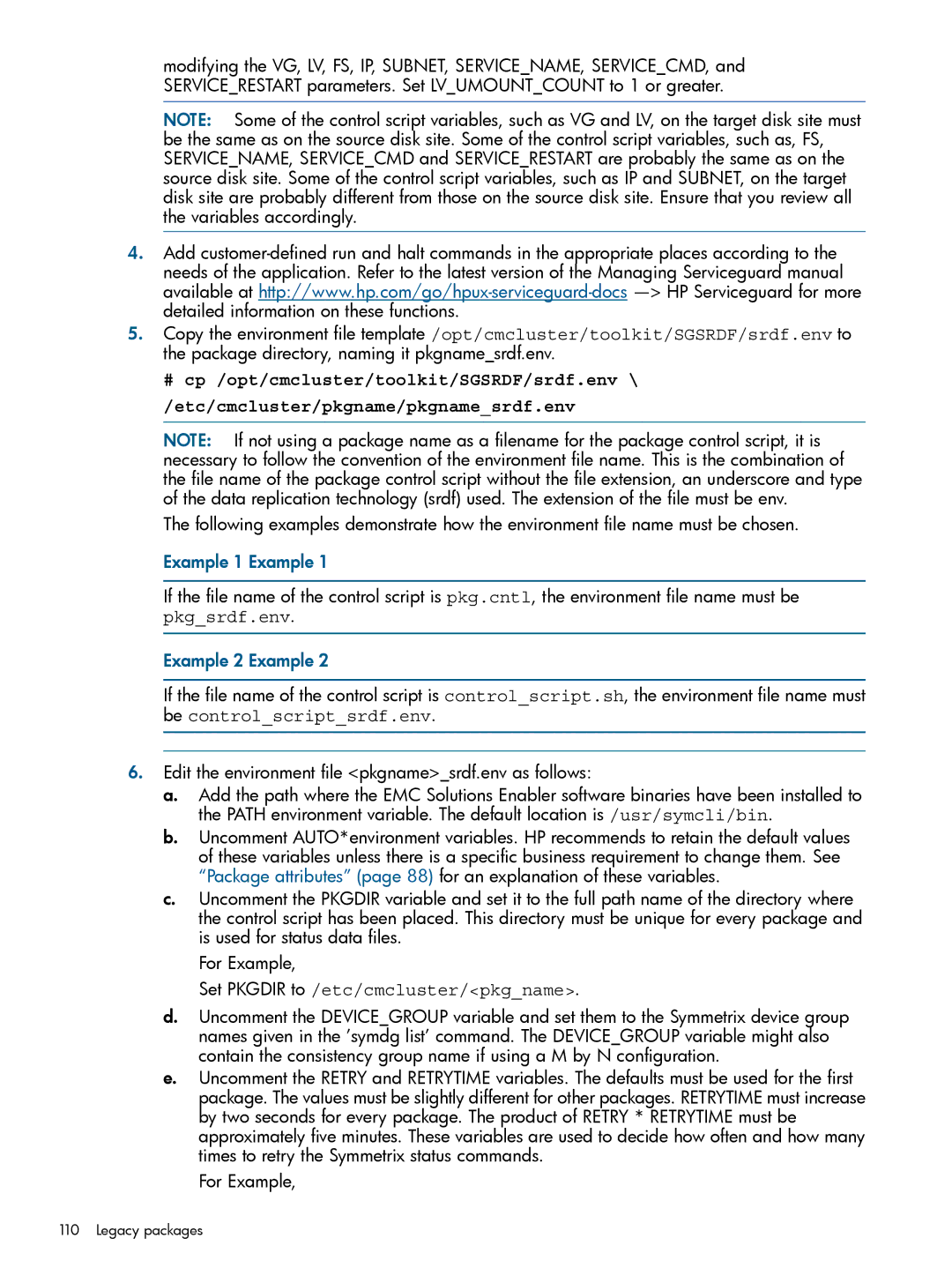
modifying the VG, LV, FS, IP, SUBNET, SERVICE_NAME, SERVICE_CMD, and SERVICE_RESTART parameters. Set LV_UMOUNT_COUNT to 1 or greater.
NOTE: Some of the control script variables, such as VG and LV, on the target disk site must be the same as on the source disk site. Some of the control script variables, such as, FS, SERVICE_NAME, SERVICE_CMD and SERVICE_RESTART are probably the same as on the source disk site. Some of the control script variables, such as IP and SUBNET, on the target disk site are probably different from those on the source disk site. Ensure that you review all the variables accordingly.
4.Add
5.Copy the environment file template /opt/cmcluster/toolkit/SGSRDF/srdf.env to the package directory, naming it pkgname_srdf.env.
# cp /opt/cmcluster/toolkit/SGSRDF/srdf.env \ /etc/cmcluster/pkgname/pkgname_srdf.env
NOTE: If not using a package name as a filename for the package control script, it is necessary to follow the convention of the environment file name. This is the combination of the file name of the package control script without the file extension, an underscore and type of the data replication technology (srdf) used. The extension of the file must be env.
The following examples demonstrate how the environment file name must be chosen.
Example 1 Example 1
If the file name of the control script is pkg.cntl, the environment file name must be pkg_srdf.env.
Example 2 Example 2
If the file name of the control script is control_script.sh, the environment file name must be control_script_srdf.env.
6.Edit the environment file <pkgname>_srdf.env as follows:
a.Add the path where the EMC Solutions Enabler software binaries have been installed to the PATH environment variable. The default location is /usr/symcli/bin.
b.Uncomment AUTO*environment variables. HP recommends to retain the default values of these variables unless there is a specific business requirement to change them. See “Package attributes” (page 88) for an explanation of these variables.
c.Uncomment the PKGDIR variable and set it to the full path name of the directory where the control script has been placed. This directory must be unique for every package and is used for status data files.
For Example,
Set PKGDIR to /etc/cmcluster/<pkg_name>.
d.Uncomment the DEVICE_GROUP variable and set them to the Symmetrix device group names given in the ’symdg list’ command. The DEVICE_GROUP variable might also contain the consistency group name if using a M by N configuration.
e.Uncomment the RETRY and RETRYTIME variables. The defaults must be used for the first package. The values must be slightly different for other packages. RETRYTIME must increase by two seconds for every package. The product of RETRY * RETRYTIME must be approximately five minutes. These variables are used to decide how often and how many times to retry the Symmetrix status commands.
For Example,
